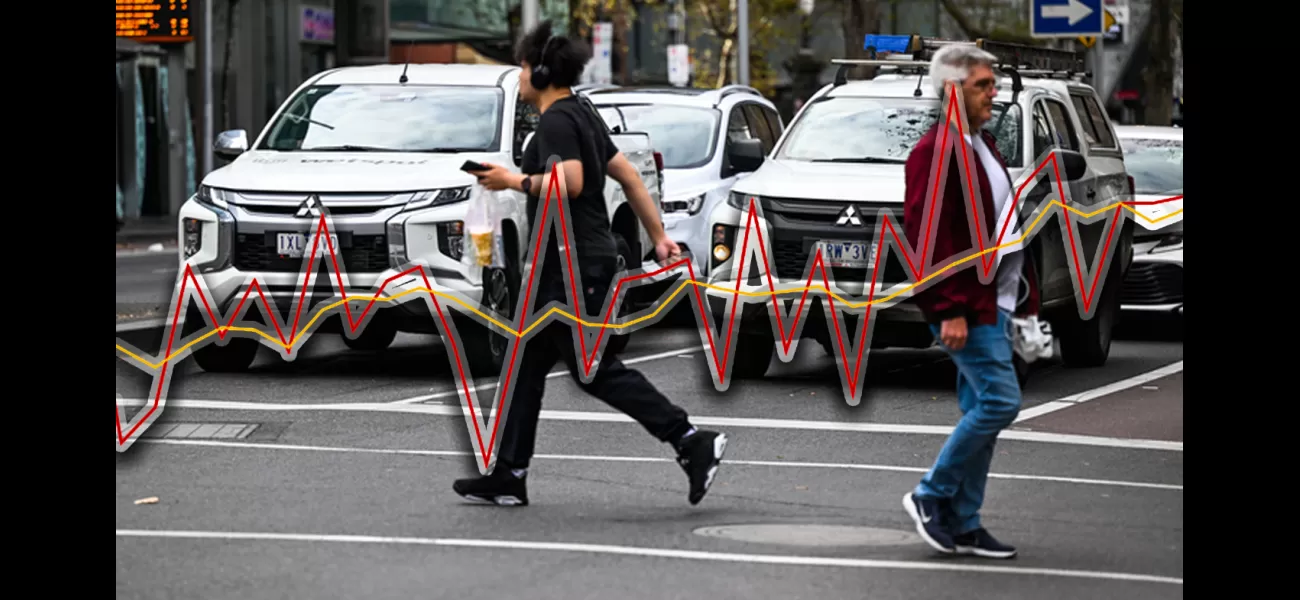Australians' preference for large vehicles is causing harm.
Despite advancements in roads and safety tech, the number of road fatalities in Australia continues to rise.
May 25th 2024.

It seems that Australians have a growing love for large cars, as the number of sales have been steadily increasing. However, this trend is not without its consequences. The national road toll, or the number of deaths on Australian roads, has also been on the rise, reaching levels that have not been seen in a long time. This is not just a coincidence, according to Professor Stuart Newstead, director of Monash University's Accident Research Centre. He believes that there is a clear link between these two statistics.
Despite improvements in road safety in the years leading up to the pandemic, the 2020s have seen a concerning and deadly reversal of progress. In 2023, the road toll hit 1270, the highest number of deaths since 2016 and the second-worst record in the past 11 years. Coincidentally, the three best-selling cars during this time were all dual-cab utes, large and heavy vehicles that can cause more harm to pedestrians and other drivers due to their size. Newstead explains that this is a major contributing factor to the increase in road toll, as the higher proportion of utes in the country's road fleet makes it less safe for everyone.
He further explains that the belief that utes are safer due to their size is a misconception. In fact, studies have shown that if the entire vehicle fleet in Australia were to be replaced with commercial utes, the road toll would rise by 25%. This is a significant and alarming statistic that highlights the dangers of these vehicles. However, utes are not the only factor contributing to the rise in road deaths. The pandemic has also played a role, due to a rise in population, people avoiding public transport, and a noticeable increase in reckless driving and bad behavior on the roads.
Newstead believes that the pandemic has caused a shift in people's attitudes towards road safety and sharing the roads. He notes that there has been a rise in extreme and anti-authoritarian behavior, with people disregarding rules and regulations. This includes drug and alcohol use, speeding, and a lack of consideration for others on the road. He hopes that this behavior will eventually normalize, but it has certainly contributed to the current situation. So, what can be done to reverse this trend and reach Australia's ambitious goal of zero road deaths by 2050?
One of Newstead's suggestions is to remove the tax incentives for buying dual-cab utes. These vehicles are currently exempt from luxury car tax and are often written off as business expenses, even when they are used for personal reasons. However, this may not be a popular decision among voters, as utes are in high demand. Another solution is to reevaluate speed limits in Australia. Newstead points out that while major European cities have maximum speed limits of 50km/h and 30km/h in high-pedestrian areas, Australian cities rarely go lower than 40km/h and have speed limits of up to 80km/h on busy roads. In the regional areas, there is also a mismatch between speed limits and the safety of the roads, which can be improved by adding dividing barriers to reduce the risk of head-on collisions. The goal, according to Newstead, is to create a "safe system" where even if someone makes a mistake, it does not result in death.
However, he admits that reaching the target of zero road deaths by 2050 may not be possible without a major change in Australian policy. This would require a shift in government focus towards an integrated planning approach and investment in the regional arterial road network. Without this decisive action, he believes that Australia will continue to go around in circles without making any significant progress. To stay updated on the latest news, celebrity gossip, and sports updates, you can follow us on WhatsApp. Our channel offers a private and ad-free space where you can receive all the latest updates without any distractions.
Despite improvements in road safety in the years leading up to the pandemic, the 2020s have seen a concerning and deadly reversal of progress. In 2023, the road toll hit 1270, the highest number of deaths since 2016 and the second-worst record in the past 11 years. Coincidentally, the three best-selling cars during this time were all dual-cab utes, large and heavy vehicles that can cause more harm to pedestrians and other drivers due to their size. Newstead explains that this is a major contributing factor to the increase in road toll, as the higher proportion of utes in the country's road fleet makes it less safe for everyone.
He further explains that the belief that utes are safer due to their size is a misconception. In fact, studies have shown that if the entire vehicle fleet in Australia were to be replaced with commercial utes, the road toll would rise by 25%. This is a significant and alarming statistic that highlights the dangers of these vehicles. However, utes are not the only factor contributing to the rise in road deaths. The pandemic has also played a role, due to a rise in population, people avoiding public transport, and a noticeable increase in reckless driving and bad behavior on the roads.
Newstead believes that the pandemic has caused a shift in people's attitudes towards road safety and sharing the roads. He notes that there has been a rise in extreme and anti-authoritarian behavior, with people disregarding rules and regulations. This includes drug and alcohol use, speeding, and a lack of consideration for others on the road. He hopes that this behavior will eventually normalize, but it has certainly contributed to the current situation. So, what can be done to reverse this trend and reach Australia's ambitious goal of zero road deaths by 2050?
One of Newstead's suggestions is to remove the tax incentives for buying dual-cab utes. These vehicles are currently exempt from luxury car tax and are often written off as business expenses, even when they are used for personal reasons. However, this may not be a popular decision among voters, as utes are in high demand. Another solution is to reevaluate speed limits in Australia. Newstead points out that while major European cities have maximum speed limits of 50km/h and 30km/h in high-pedestrian areas, Australian cities rarely go lower than 40km/h and have speed limits of up to 80km/h on busy roads. In the regional areas, there is also a mismatch between speed limits and the safety of the roads, which can be improved by adding dividing barriers to reduce the risk of head-on collisions. The goal, according to Newstead, is to create a "safe system" where even if someone makes a mistake, it does not result in death.
However, he admits that reaching the target of zero road deaths by 2050 may not be possible without a major change in Australian policy. This would require a shift in government focus towards an integrated planning approach and investment in the regional arterial road network. Without this decisive action, he believes that Australia will continue to go around in circles without making any significant progress. To stay updated on the latest news, celebrity gossip, and sports updates, you can follow us on WhatsApp. Our channel offers a private and ad-free space where you can receive all the latest updates without any distractions.
[This article has been trending online recently and has been generated with AI. Your feed is customized.]
[Generative AI is experimental.]
0
0
Submit Comment





